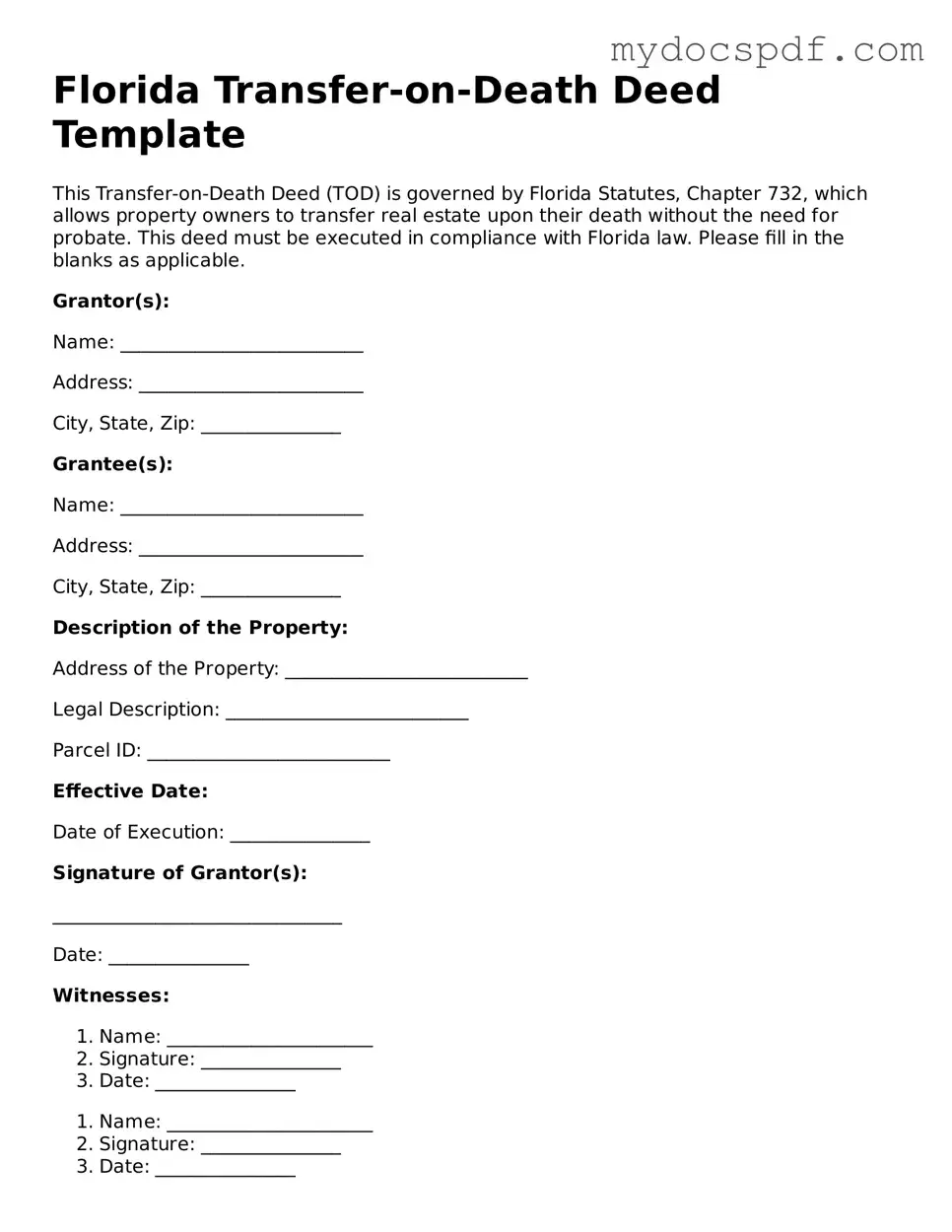Florida Transfer-on-Death Deed Template
This Transfer-on-Death Deed (TOD) is governed by Florida Statutes, Chapter 732, which allows property owners to transfer real estate upon their death without the need for probate. This deed must be executed in compliance with Florida law. Please fill in the blanks as applicable.
Grantor(s):
Name: __________________________
Address: ________________________
City, State, Zip: _______________
Grantee(s):
Name: __________________________
Address: ________________________
City, State, Zip: _______________
Description of the Property:
Address of the Property: __________________________
Legal Description: __________________________
Parcel ID: __________________________
Effective Date:
Date of Execution: _______________
Signature of Grantor(s):
_______________________________
Date: _______________
Witnesses:
- Name: ______________________
- Signature: _______________
- Date: _______________
- Name: ______________________
- Signature: _______________
- Date: _______________
Notary Acknowledgment:
State of Florida
County of _________________
On this _____ day of __________, 20__, before me, a notary public, personally appeared _______________________, known to me to be the person who executed the foregoing Transfer-on-Death Deed, and acknowledged that he/she executed the same for the purposes therein expressed.
_______________________________
Notary Public Signature
My Commission Expires: _______________
